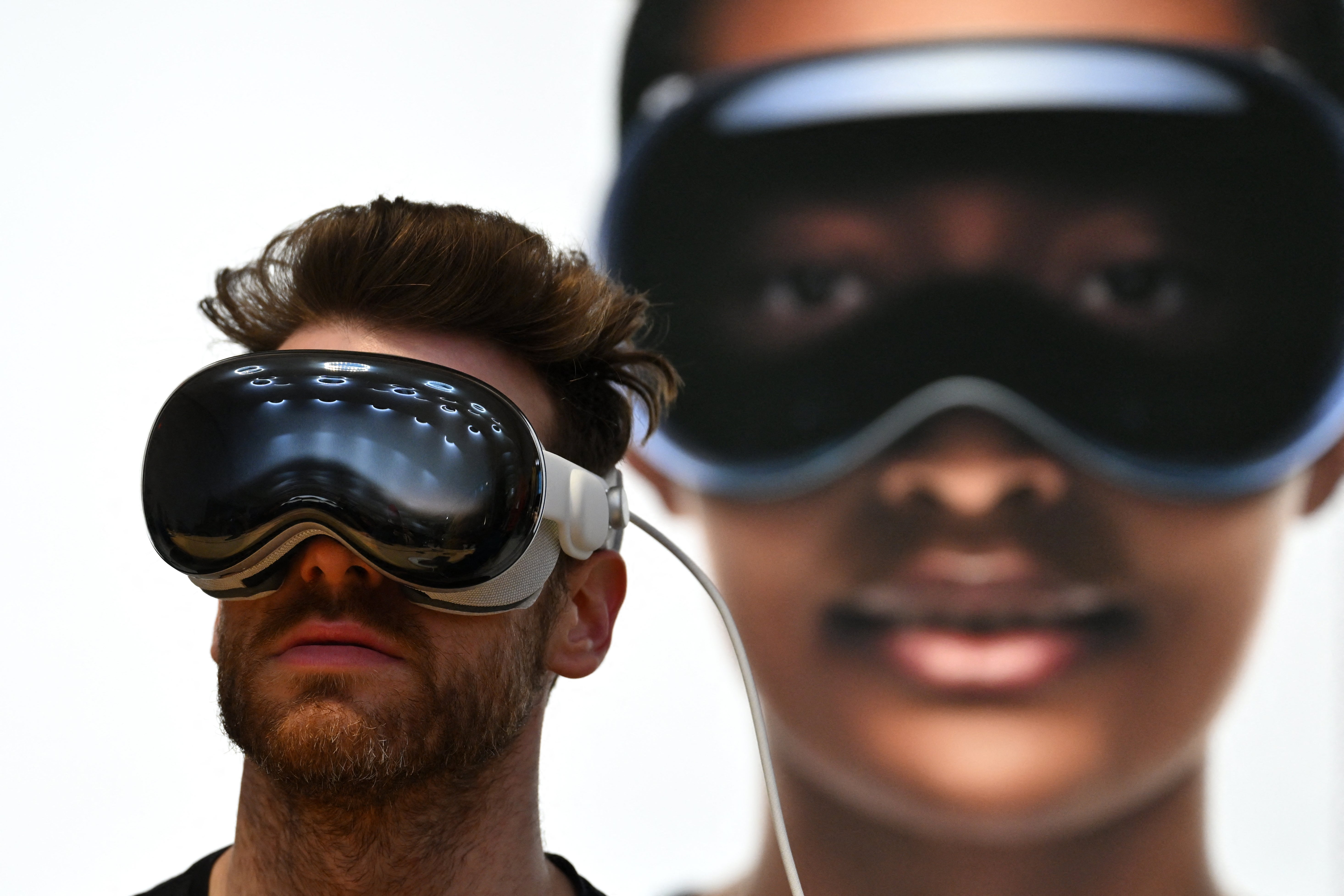Apple Vision Pro: What I learnt from spending a week living and working in the futuristic headset
Apple has explained its hopes and vision for its headset in great detail – but I was still surprised by six things as I integrated it into my daily life, writes Andrew Griffin


Your support helps us to tell the story
From reproductive rights to climate change to Big Tech, The Independent is on the ground when the story is developing. Whether it's investigating the financials of Elon Musk's pro-Trump PAC or producing our latest documentary, 'The A Word', which shines a light on the American women fighting for reproductive rights, we know how important it is to parse out the facts from the messaging.
At such a critical moment in US history, we need reporters on the ground. Your donation allows us to keep sending journalists to speak to both sides of the story.
The Independent is trusted by Americans across the entire political spectrum. And unlike many other quality news outlets, we choose not to lock Americans out of our reporting and analysis with paywalls. We believe quality journalism should be available to everyone, paid for by those who can afford it.
Your support makes all the difference.The Vision Pro is finally on its way to the rest of the world, meaning that people in the UK and elsewhere finally try out Apple’s view of the future of computing.
The headset costs £3,499 and puts a screen and cameras onto people’s head. Those cameras project a view of the outside world onto the screen – which can then be used to show virtual objects or become entirely immersed in virtual reality.
Apple first announced the headset in June last year. It was released in the US in February, and now is coming to Canada as well as other countries in Europe and Asia.
When the headset was first released, it was met with a flurry of questions, many of which still have not yet been answered. But trying it out gives some glimpse at what those answers might be.
What is the headset actually good for? How might it change our lives?
Those questions and others have become more clear after spending a week living and working inside the headset. Here are the surprises that arise as you do so, and the things that Apple hasn’t mentioned while trying to get the world to cough up £3,499 for a headset.
Some of the least spectacular uses are also the best
Perhaps for obvious reasons, Apple’s ads and discussion of the headset have largely focused on the amazing new experiences that it brings. And they are real: you can interact with virtual dinosaurs or get up close and personal with sporting stars.
But in the past week some of the most productive and rewarding time I have spent inside the headset has been doing normal work. And indeed much of that has been on my normal computer, which can be mirrored into the headset so that you can see its display around you in space.
It’s great for pulling up a large window and working through emails with your music app available at the turn of a head, for instance. And all of that can be done while sitting in a virtual environment, such as Yosemite.
It’s a focus machine
The whole spatial focus of the headset means that you can choose how much you are distracted and what by. As such, the Vision Pro is a great way of locking in to whatever you are doing.
I had feared in advance that the headset would be a wonderland of experiences. How can you ever focus when a huge cinema is just a click of a button away?
But because those things are organised in space, they feel quite literally distant. Over the last week, I have left the Apple TV app in my living room, and my computer in my work space; the divide between the rooms is reflected in virtual space, and means that you can focus on the tasks required wherever you are.
If you would prefer to go somewhere else entirely, that’s easy too. You can open up your email window and set it against an empty natural scene, giving you 360-degrees of space to concentrate on a huge version of your messages.
You can sit however you like
This is, admittedly, something of a personal problem. But I have terrible sciatica at the moment which means that it can be painful and tiring to sit at a desk for a long period of time.
Thankfully with the Vision Pro I don’t have to; I can take my computer wherever I like, because it’s attached to my face. The last weeks have seen me sprawl on the floor and sit cross-legged on the sofa, all while getting work done.
Apple hasn’t featured people twisted around on the floors of their front room in its marketing materials, and probably with good reason. But it is perhaps the thing I have been most surprised by since I started using the headset.
It’s a great way of connecting – to other people in the headsets
When I first called my dad to talk to him about the headset, I did so from inside of it. And immediately he seemed slightly off, having noticed there was something uncanny about me but not what it was.
That was because he was looking at my “spatial persona” in FaceTime. That’s a 3D model that the headset creates of you, which is then controlled with your real life face – essentially a reproduction of you in the virtual world.
You get the same effect while using your persona if you can see it. When I used Zoom and looked at my self, I felt very unheimlich, and I couldn’t do it for long.
All of this goes however when you’re with other in virtual space, each of whom is using their own persona. Somehow, that eases the self-consciousness and you can happily chat away.
From there, the possibilities are endless. The spatial version of FaceTime lets you high five, as well as look together at big versions of apps – so that you can all sit around and flick through a presentation, for instance.
For practical purposes, it’s like being there, and it could be the future of virtual meetings. (But for now I’ll still be doing my Zoom calls through my normal computer.)
It’s going to be a great fitness device. One day
There’s an app inside the Vision Pro that is made as part of Apple’s fitness offerings, which also include Fitness+. It’s called Meditation, and as the name suggests it takes you through a guided meditation, complete with calming visuals.
It’s a hint at what the Apple Vision Pro could one day be: a great device to help you move and keep you entertained and engaged as you do so. But it’s the only example of that for now.
The explanation for why is probably obvious: it’s big, heavy, and the soft materials might not do great with the salty sweat of its owner poured over them. But there are hints throughout the headset that it could one day be exactly that.
Headsets constantly remind you that you are a human being
In many ways, headsets like the Vision Pro seem to be the ultimate insult to the parts of our brain and body that have been formed, through evolution, to keep us safe. And even though that might seem like a slightly fanciful thing to worry about, the headsets never let you forget it.
They cut you off from the outside world and they show you things that don’t exist. They force your eyes to track movement that your body isn’t feeling happen. And much more besides.
Even if you feel you have consciously made peace with those things, time in a headset shows that your conscious mind isn’t all that matters. In other headsets I have felt a kind of fear deep in my body that I cannot see what surrounds me, and a sickness in my stomach as I suffer from motion sickness.
The Vision Pro avoids both of those. It defaults to showing you your real environment so that you always feel safe from it, and even when you’re in a virtual world then other people will fade in as spectres. The speed of the sensors and displays is such that you can avoid motion sickness.
But even in the best version of virtual reality that we have, those things are always there. There is a strange kind of philosophical and psychological shakiness when you are inside a headset – and I don’t know whether it will ever leave.
Join our commenting forum
Join thought-provoking conversations, follow other Independent readers and see their replies
Comments